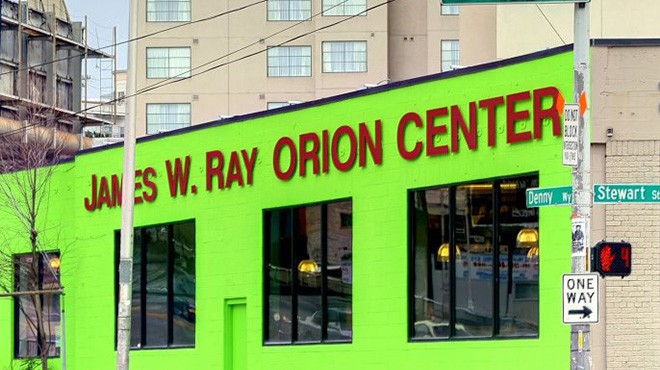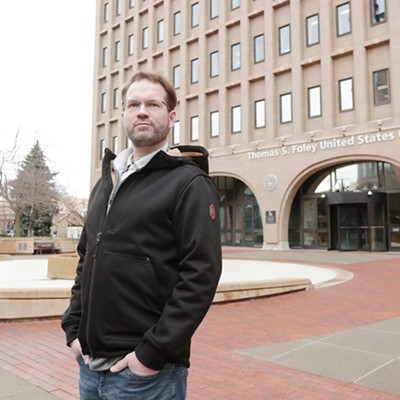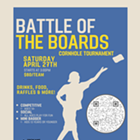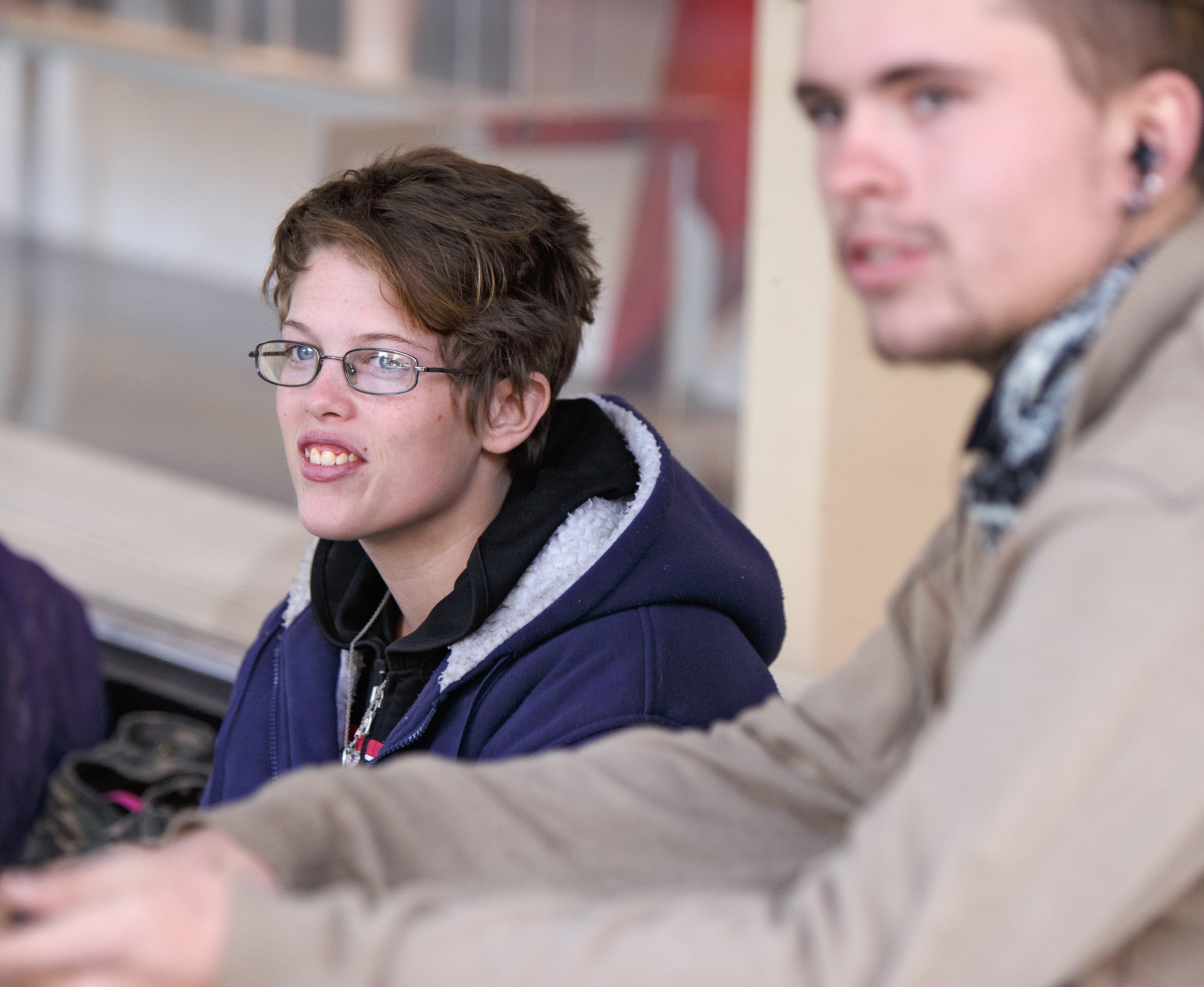
Cool fall air swirls around Harleigh Coulter as she sits among nearly everything she has. Someone hands her a half-gallon of Tropicana and a can of pizza-flavored Pringles; someone else lights her Camel cigarette and says, “I’ll be right back, sister.”
At 22, with crooked teeth and icy blue eyes, Coulter doesn’t have much. But she does have hope in the extra heartbeat tucked under her three layers of long sleeves. She’s six weeks pregnant, and other than the morning sickness, she’s giddy. Ask her where she’ll be this time next year and she’ll paint a picture of a house with enough room for her and the baby, her “baby daddy” and her street brother, Dillon, plus a fenced yard for Dillon’s Husky mix. But for now, Coulter’s sleeping on the street, in a park or down by the river.
She’s not without parents. In fact, she still sees them both. But they’re going through their own hard times, she says, and she doesn’t want to burden them. Anyway, her stepdad is unpredictable. She describes yelling and mental abuse, the kind that doesn’t leave bruises, but gets under her skin and makes her heart race. The kind, she fears, that could cause her to miscarry from stress.
“My friends know that when I’m stressed — they know how to calm me down. They know how to take care of me when I need it,” Coulter says, sitting on the cold sidewalk beside the Macy’s building downtown. “Sleeping on the streets, depending on where I’m sleeping, there’s the sound of the river, if we’re down by the river. That actually calms me down a lot. Sometimes even cars going down the street help me sleep.”
She and her friends see themselves as a family. They look out for each other, and they say they’re angry when they hear about violence from other young people that’s giving them, and downtown, a bad reputation. They panhandle and ask for leftovers, and admit they smoke pot, but say they’re not looking for trouble. Some struggle with anger or mental health issues as serious as schizophrenia or bipolar disorder. For some, living on the street is their best option. For others, it feels like their only one.
Dillon Green, 20, carries a bulky backpack with clothes and a blanket hanging from the side as he pushes his dirty-blond hair straight back out of his eyes. Four years ago, he was put into foster care because of his parents’ meth use. Soon, he dropped out of school. Some nights, he couch-surfs; on others, he sleeps somewhere downtown. This morning, he woke up in Riverfront Park. He’s too old for Crosswalk, the youth shelter, and he doesn’t get along with older homeless men in other shelters who, he says, can be violent. Green says he’s been confronted by cops while hanging out with friends in Riverfront Park and told they couldn’t be there in such a large group. On a recent fall day, as downtown employees scatter for lunch, Green and his small “family” move from the planter near the Olive Garden on Spokane Falls Boulevard to outside Macy’s and back to the park.
“Sometimes we ask for leftovers because we’re hungry,” Green says, acknowledging complaints from business owners about “street kids” downtown. “They can get over it.”
At times in recent weeks, it’s seemed a sleepy town has awoken to find itself a city with a gritty urban downtown under siege. TV reporters muse about the new boldness of a roving group of “street kids.” Business owners blame their closures on the same group. The mayor says he’s “angry” about violence in the city’s core.
Indeed, few on the streets downtown are angels, “street kid” or otherwise. As midnight approaches on a crisp Thursday and Coulter’s group panhandles outside the darkened Ridpath Hotel, others down the street, mostly in their late 20s or 30s, explain their own homelessness and meth addictions. They look over their shoulders. One trades marijuana for a cigarette. Another wears a black necktie to indicate he’s got “a product to sell.” Bar patrons inch toward the far edge of the sidewalk as they pass the group. Just a block away and two weeks earlier, a KXLY cameraman caught video of a teenager punching a man, knocking him to the ground and running away with other teens, laughing the whole time. That night, the same group reportedly broke into and stole from Sport Town near Main and Stevens. Last summer, a bouncer at the nearby Jimmy’z on Sprague said he was jumped by a group of 20 teenagers after getting off work, landing him in the hospital. And within the past year, the owners of both the 3-month-old cafe Beignets and downtown mainstay the Blue Spark blamed their closures on young loiterers. Up a few blocks, at the skate park under the freeway, even experienced young homeless people say the violence and drug use are too rough to risk.
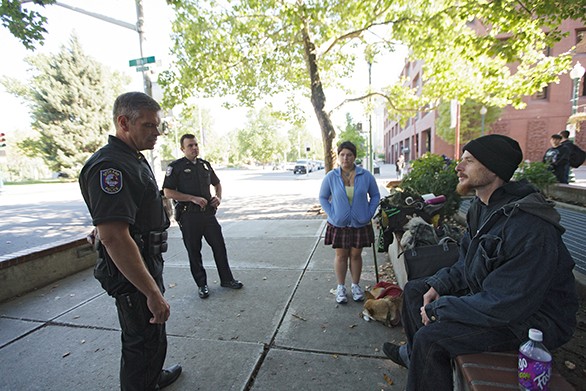
But the statistics alone warrant a closer look at downtown. There have been small increases in some types of violent crime: two commercial robberies to last year’s one; two more assaults than there had been by this time in 2012. But violent crime overall — including homicide, rape, robbery and assault — is down nearly 5 percent citywide and about 12 percent downtown. And while property crime is up across the city, it’s down downtown. On a weeknight in the downtown core, marked and unmarked officers patrol. During the day, bike cops and officers on foot are out too.
“Overall, I believe our downtown is safe, but … I am not pleased with where we are at this point,” says Mayor David Condon. “We have a significant amount of work to do.”
Bridget Cannon, programs director at the downtown youth shelter Crosswalk, says the problems of downtown aren’t new, though she blames media and social media for exaggerating them this year. She points out that Crosswalk keeps kids overnight, so those punching Satellite patrons aren’t also staying at her shelter. Late last month, she and the shelter’s kids gathered to talk about recent violence. The kids were worried they’d get lumped in with those making trouble, Cannon says, so they suggested signing pacts of nonviolence or doing a downtown cleanup.
Cannon calls teenagers and young adults on the street “completely disconnected, meaning they’re not enrolled in school, they’re not employed, they’re doing absolutely nothing.” And changing that may be harder than it seems to most. Cannon points to a difficult job market and the problems people can face renting a house or apartment without a job.
“I’m not making an excuse by any means [for those who are violent],” she says, “but if you want to know who they are, that’s part of the picture.”
The fear alone has been enough to spark a community discussion, with business owners, police and the City Council taking action on the threat — real or perceived — they believe the so-called “street kids” pose.
First, businesses took matters into their own hands. Across the street from the Macy’s where Coulter and Green sat, on the fourth floor of the Chase Bank building, the lighting is low and elegant in the entryway to Kiemle & Hagood, where a copy of the Wall Street Journal sits on the coffee table. The property management company oversees the Peyton Building on Post Street, where manager Alison Bantz has taken extra measures to respond to groups of people congregating on the sidewalks nearby. Adjusting her neat orange sweater, Bantz is careful with her words.
“It’s not illegal to be homeless and I appreciate that. It’s not illegal to smoke and I understand that,” she says. “But I think the general business public wants to feel safe on the streets.”
Bantz says large groups of smokers and loiterers began to congregate on the sidewalk outside the building, intimidating potential customers, when the nearby STA Plaza closed its smoking area last summer. (STA now says it plans to open a new one.) Despite state law outlawing smoking within 25 feet of a business entrance, lax enforcement has meant the law has had little impact. So the company spent $1,500 on a mosquito — a device that emits a high-pitched sound designed to be heard only by people younger than 30 after they stand near it for more than a few minutes — and about $15,000 since April on private security guards. Bantz says she didn’t renew the lease for the smoke shop that had occupied the building in another effort to curb the problem. With a vacancy in the building and at least one tenant, Career Path Services, accessed by people with disabilities, the measures were essential, she says. Bantz says she had trouble renting the vacant space, now home to the new bar the Volstead Act, because of the loitering. Among the building’s other tenants: Brews Bros Espresso, the police department’s new downtown precinct and a Cougar Crest Winery tasting room.
“Nobody wants to sit inside tasting wine and — it was not an appealing sight looking out on that,” she says.
The block is also the most direct path for people staying downtown to get to the area’s biggest retail center.
“Our concept,” Bantz says, “is that as you come from those Davenport properties, [Post Street] should be the cleanest, nicest, most attractive entry to River Park Square.”
Before a small crowd of reporters and city staff last week, City Council President Ben Stuckart touted a group of city efforts he deemed the “Downtown Livability Initiative,” which is made largely of projects already in progress. Among them: a set of ordinances the council passed Monday; a plan to hire 25 new police officers, which the mayor proposed in his 2014 budget; a Downtown Spokane Partnership-led PR campaign to discourage people from giving money to panhandlers; and STA’s plans to reopen the smoking area. The city, Stuckart announced, will also turn streetlights on earlier and urge the federal government to fund youth outreach programs.
Early next year, the DSP plans to hire a consultant to assess services available in downtown, deciding what’s successful and what’s not. DSP President Mark Richard sets the stakes: 1,300 business and property owners, 26,000 jobs and 15 percent of Spokane’s taxable retail sales happen downtown. The ultimate goal is to discourage both panhandling and outreach programs DSP sees as offering “handouts” instead of connections to services. (Some local shelters are also pushing back against panhandling by temporarily barring people they catch “flying a sign.”)
“We’re not trying to move them on. We’re trying to move them into a life that’s better for themselves,” Richard says. “To me, this is way more more humane than a nonprofit that wants to hand them a tarp under the bridge and say, ‘God bless you. I love you, man. Go back under the bridge.’”
The ordinances passed this week span issues in the downtown core. Changes strengthened rules prohibiting skateboards on downtown sidewalks and “unruly” behavior at the STA Plaza, including any “conduct that is inconsistent with [its] intended use and purpose,” and will allow the city to cite property owners who don’t remove graffiti from their buildings within 10 days of being notified.
The other laws created new misdemeanor offenses for interfering with health care facilities by blocking entrances or disturbing the peace within the facility, or knowingly calling 911 in a nonemergency situation. (Misdemeanor offenses mean an officer can make an arrest or write someone a criminal ticket for which the person must appear in court; failing to appear results in a warrant. Laws against trespassing and “transient shelters” can also result in misdemeanors for the homeless.) A provision outlawing possession of vehicle prowling tools like a slim jim or a shaved key was postponed this week, pending a final legal review.
A controversial extension of the city’s sit-lie ordinance also was on the docket until complaints arose over its constitutionality. The revisions would extend the hours that sitting and lying on downtown sidewalks is illegal from the current 7 am to 9 pm to between 6 am and 3 am, and would remove a clause in the current law requiring officers to warn people before arresting them for violating it.
At an August public safety committee meeting introducing the ordinances to the council, police Sgt. Dan Waters described nighttime scenes where “normal people … can’t walk down the sidewalk.
“If you want to go down there and feel safe,” he told the council, “you have to literally tip-toe around some sidewalks.”
Some, including the ACLU of Washington, worry that expanding the sit-lie law would unfairly target homeless people and give police too much discretion in whom to arrest. DSP’s Richard and some councilmembers say they’d still like to see the changes.
“We have to remember the primary purpose of a sidewalk is for walk and for movement,” Councilman Steve Salvatori said at Stuckart’s press conference. “We cannot watch our sidewalks be managed in a way that our businesses close down. That is simply not fair. … We will do something.”
But as the weather cools down and the groups downtown dwindle — and with estimates that it costs as much $120 a day to house someone in a local jail, plus the cost of a public defender — some argue criminalizing disorder is a waste of money. Worse, they say, it’s unlikely to solve the root problems causing young people to act out in the first place.
For a few nights this summer, the gym in the basement of downtown’s Central United Methodist Church, with its high ceiling and linoleum floor, was buzzing with about 40 boisterous teenagers jumping on trampolines and doing gymnastics. Rough pasts, life on the street — none of it mattered for a moment.
“[Living on the street] is an ecosystem where kids are just learning to survive,” says Loli Kalua. Recreation can provide a break from that.
From this basement, Kalua runs Change for the Better, a new outreach program that offers help for homeless people in need of a GED, an ID or help finding housing or a job. The group mostly works with adults, but has hopes to extend its reach to young adults and teenagers. As fall weather settles in, it plans to start midnight basketball here on Fridays. Kalua, who often houses “couch-surfing” teenagers her own children befriend, says the basketball program will be a temporary offering for young people on the street. But in the long term, she — and the group sitting outside Macy’s — hopes Spokane will create a youth center that consistently offers sports, videogames and positive adult role models who can connect with at-risk young people. Downtown’s youth-focused nonprofits, Crosswalk and Cup of Cool Water, do important work connecting people with education and resources, she says, but she wants to see activities to keep them entertained.
“They’re screaming for a purpose, for a place to belong, for a reason to be and do,” Kalua says. “You’ve got to get ’em where they are, and that’s in the dirt.”
Kalua’s isn’t the only effort.
A once healthy, then defunded, street outreach program led by Crosswalk will return with newly awarded grant money. In East Central, Spokane police officers coached about 40 at-risk kids in a basketball league this summer as part of an ongoing youth-focused initiative. Momentum is building behind a local community court, where offenders could do community service instead of serving hard time for “quality of life crimes,” like public urination and graffiti. (Similarly, Clark County has a homeless court, where homeless people can work off fines through community service.)
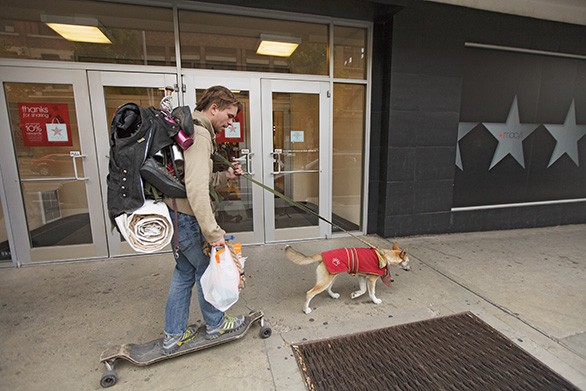
Spokane County’s juvenile court already has a state-mandated diversion program in place, targeting teenagers about four weeks after they commit low-level offenses.
“That’s on purpose. We want to see what’s happened [since],” says program manager Scott Ryman, who says most of the kids he sees in the program have experienced childhood stress and a lack of role models. They’re connected with classes and community service in an effort to break the cycle. While he won’t share his personal views about downtown, Ryman says he’d like to see more community mentoring programs.
“We need to get it right. … A lot of these young people are refugees in a way,” he says, but it can’t fall on the criminal justice system alone. “There is no silver bullet.”
With support from private grant funds, Spokane Public Schools is piloting a new program for middle school students where teams of school and social service employees meet with parents whose children have four unexcused absences in a month. The team works to find and solve whatever might be keeping the student from the classroom, things like a lack of transportation or after-school care. (Washington’s Becca Law, named for a 13-year-old runaway prostitute bludgeoned to death in Spokane in the ‘90s, mandates that schools report children who miss more than five days in a month to juvenile court. Programs like this attempt to intervene before that point to keep the child in school.)
And there’s hope in new commercial development, including Walt Worthy’s massive Convention Center hotel and Ron Wells’ plans to transform the Ridpath into apartments. Wells, whose development company has restored historic buildings across the city, says he believes more people living in the core will create a safer downtown with more eyes on the street.
“We had the same problem with street people … in the west end of downtown, at First and Cedar,” Wells says of the 1990s. “[Today] it’s much better. It’s completely new days. It’s a great neighborhood now, and the rest of downtown will be a great neighborhood as well. I’m confident.”
Elsewhere, some have been even more ambitious.
- The Australian state of Victoria encourages planners and developers to use “Crime Prevention Through Environmental Design.” The theory aims to make shared spaces feel safer by encouraging enough foot traffic to provide “natural surveillance” or designing buildings that are active enough to discourage vandalism or violence. One example: designing shops on the ground floor of tall office buildings.
- Consider also efforts in the United Kingdom, where in some towns, social workers are plotting kids like data on a chart. They’re plugging teenagers into a matrix, listing interactions with social services, school and police, and calculating their likelihood of getting in trouble. The worst 50 or so make the list of kids they’ll try to help.
The program was a response to a national report in the ‘90s criticizing the nation for its response to youth crime. The “top 50” young people in each neighborhood considered most likely to offend or reoffend become the focus of the program and are offered sports, classes and mentoring. In its first two years, arrests among those identified in the “top 50” fell by 65 percent, and even among those who did get arrested after entering the program, they were arrested fewer times and for less serious offenses, according to a government review of the project.
“You’re always going to get businesses concerned about youth if you get an incident or two where something goes wrong,” says Irvin Waller, a University of Ottawa professor and head of an international nonprofit for victims of violent crimes. Waller has studied crime prevention programs across the globe, and his book Less Law, More Order takes aim at public safety systems he says are reactive to crime instead of proactive in preventing it. “Targeting services is absolutely what is needed, but the way we’re organized at the moment is policing of problem places, so you’ve got youth who are a problem in an area [and] you get the police to come in and do something about it.”
Instead, Waller says, a successful approach is a comprehensive one.
“Police operate in a silo and their main tools are responding to 911 calls and making arrests, and they’re not very good at other things,” he says. Schools and service agencies are other silos. “Models that solve these sorts of problems find ways of getting these silos to work together around the particular problem.”
Getting groups at the same meeting table is just the start. Waller advocates for local governments to establish an office — “in City Hall, not in the police” — to identify problems and potential solutions.
υ Across the Cascades, Seattle is a champion in the “housing first” movement, fighting to get homeless people places to live, believing that stability can help them overcome other struggles. The well-known 1811 Eastlake building takes the theory a step further, providing “wet housing,” where 75 chronic alcoholics are not, as they are in most programs, required to be sober to live there. Despite early controversy and pushback, evaluations of the program have found it actually decreases alcohol use and saves taxpayers millions a year in emergency response to chronic street alcoholics.
“The data are accumulating and can no longer be ignored,” University of Washington research assistant professor Susan Collins told the Associated Press. “Chronic homeless people are human beings who are equally capable of making positive choices if given a chance.”
The city is also home to a diversion program some say could be one answer to problems here in the Inland Northwest. As part of a pilot project there called Law Enforcement Assisted Diversion, or LEAD, cops can offer people they’re ready to arrest for drugs or prostitution (who don’t have violent priors) an alternative: a meeting with a case manager who will assess their needs and try to get them into treatment or housing, bypassing the criminal justice system entirely. The program, currently operating only on certain days in one neighborhood, was born out of a shared frustration over how many people were being jailed for drug offenses and how little of an impact doing time seemed to have on their habits.
“We are now 41 years into the War on Drugs, and it is objectively a failure,” says program director Kris Nyrop, rattling off oft-cited statistics about how many Americans are incarcerated each year compared to other nations. “Given that objective failure … what else do you do? There has got to be some other way of addressing what is a clear public safety and public health problem.”
The program, funded through private foundations, will undergo its first evaluation this year, but Nyrop says it’s working anecdotally and hopes it could soon see public funding. A similar program in Spokane wouldn’t necessarily have to have the same focus. It could target property crimes, low-level drug activity or nuisance offenses like public urination and aggressive panhandling. It could be targeted at downtown. It could focus on young adults, who are too old for juvenile justice but not yet lost to the adult system.
Downtown Spokane’s problems, real or perceived, could be the first chance to test the local movement branding itself “Smart Justice.” A coalition of social, legal and health advocates, Smart Justice proponents push for alternatives to incarceration and crime prevention measures, and they support a program modeled on LEAD. After the council proposed its set of downtown ordinances, Smart Justice advocates crafted a letter to the police chief, mayor and city council asking them to take the winter to consider alternatives before creating laws that could land more people in jail.
Local civil rights attorney and Smart Justice proponent Breean Beggs says innovative thinking could help solve downtown’s problems, and larger crime issues, in the long run. The necessary shift, he says, is from thinking only about a crime to considering the offender. It’s about asking “What do they need to not re-offend?” instead of “What is the morally appropriate punishment for their particular crime?” Smart Justice isn’t advocating leniency for violent criminals, but for those whose offenses are more minor, the group believes there are cheaper, better solutions.
“If there is actual violence, if they’re being threatening or there’s property damage, they should be arrested,” Beggs says, “but if people are just in the area and not actually causing trouble, even if they’re counterculture or don’t look productive, they shouldn’t go to jail. There are better interventions.
“I’m hopeful the city has kind of a different attitude and will look at improving things for everyone, instead of just scouring a few blocks.”
Back at the downtown planter, Dillon Green reflects on his teenage years, on running away briefly and then dropping out. He says he doesn’t know where he’d be if those years had gone differently. He’s smart. The other night, he says, he had a conversation with another homeless man about physics. He doubts he would have ever enjoyed high school, but maybe he would have gone to college. Then, he adds, “I’d be one of the yuppies yelling at the homeless kids.”






